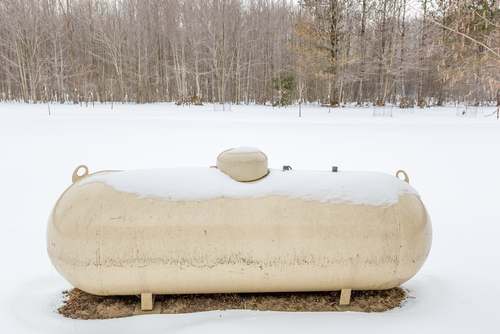How to Qualify for RMP Program Level 1
 |
After determining that a propane storage facility is subject to the RMP regulation, the next step is to identify which program level applies. The U.S. Environmental Protection Agency (EPA) established three program levels that reflect different levels of risk and, subsequently, the level of effort required to prevent accidents that could impact the public and the environment.
- Program 1 applies to processes with a very low level of risk and, thus, has a minimal set of requirements;
- Program 2 is a streamlined set of requirements for processes not eligible for Program 1 or subject to Program 3; and
- Program 3 applies to processes that are not eligible for Program 1 and that are either subject to the Occupational Safety and Health Administration’s (OSHA) Process Safety Management (PSM) Standard or are in certain industrial sectors (some chemical manufacturers, all refineries, and all pulp mills).
Since the goal of the RMP is to prevent accidents, the EPA recommends that, whenever possible, processes should attempt to qualify for Program 1 by meeting the following requirements:
1. Within the past 5 years, the process must not have had an accidental release of propane that led to human deaths or injuries off-site or response or restoration activities at environmental receptors, which are limited to national or state parks, forests, or monuments; officially designated wildlife sanctuaries, preserves, refuges, or areas; and federal wilderness areas; and
2. There are no public receptors within a distance to a 1-pound per square inch (psi) overpressure from a worst-case release.
Management of Change for Aboveground Storage Tanks webinar on Wednesday, October 29. Learn how to stay compliant and even more importantly, help minimize the risk of a minor or potentially catastrophe incident. Learn more!
Public receptors are defined as “off-site residences, institutions (e.g., schools and hospitals), industrial, commercial, and office buildings, parks, or recreational areas inhabited or occupied by the public at any time without restriction by the stationary source where members of the public could be exposed to toxic concentrations, radiant heat, or overpressure as a result of an accidental release.” Public roads are not considered off-site public receptors, however, while “off-site” means areas beyond the facility’s property boundaries, it also includes “areas within the property boundary to which the public has routine and unrestricted access during or outside business hours.”
A worst-case release is defined as “the loss of the contents of the single largest vessel (or piping) containing the regulated substance” that for propane is assumed to explode, generating a pressure wave that can damage people or structures. The rule requires the determination of the distance to a 1 psi overpressure (windows will break at 1 psi). The following table provides worst-case distances to a 1 psi overpressure for propane tanks.
|
Nominal Water Capacity (Gallons) |
Distance to Endpoint (Miles) |
|
500–1,750 |
0.1 |
|
1,751–7,000 |
0.2 |
|
7,001–23,000 |
0.3 |
|
23,001–51,000 |
0.4 |
|
51,001–90,000 |
0.5 |
|
90,001–120,000 |
0.6 |
EPA’s RMP*Comp software system is also available at http://www2.epa.gov/rmp/rmpcomp to quickly calculate worst-case distances, and 40 CFR 68.22 provides the specific parameters that must be used.
Management of Change for Aboveground Storage Tanks: Strategies for Ensuring Tank Integrity and Compliance
Join us on October 29 when our presenter will provide a clear and detailed understanding of what’s involved with ensuring AST integrity and proven strategies for the successful completion of the process. Register now.
For those propane processes that meet the Program 1 requirements, the RMP regulation has just two requirements:
1. Coordination of emergency response with the local fire department and any other local emergency planning and response agencies; and
2. Completion of a brief Risk Management Plan, including:
- Basic facility information;
- The worst-case scenario;
- A 5-year accident history, if any accidents have occurred, including on-site deaths, injuries, and significant property damage, and off-site deaths, injuries, property or environmental damage, or evacuations or shelter-in-place events;
- Emergency response activities;
- A brief executive summary, including all of the above as well as accident prevention steps taken and planned safety improvements; and
- A certification statement.
The Risk Management Plan must be filed with the EPA and made available to state and local agencies and the public. Plans can be filed using EPA’s RMP*eSubmit system at http://www2.epa.gov/rmp/rmpesubmit, which can also help simplify Plan changes, corrections, and withdrawals.
